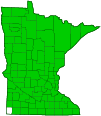Red osier dogwood
(Cornus sericea ssp. sericea)
Conservation • Wetland • Description • Habitat • Ecology • Use • Distribution • Taxonomy
Conservation Status |
|||
| IUCN Red List | not listed |
||
| NatureServe | N5 - Secure SNR - Unranked |
||
| Minnesota | not listed |
||
Wetland Indicator Status |
|||
| Great Plains | FACW - Facultative wetland |
||
| Midwest | FACW - Facultative wetland |
||
| Northcentral & Northeast | FACW - Facultative wetland |
||
Description |
Red osier dogwood subspecies sericea, sometimes called American Dogwood, is an erect, perennial shrub that rises usually on multiple stems. It can be up to 13′ tall and up to 1¼″ in diameter, but is usually no more than 10′ in height. It rises from a shallow, branching, woody root system. Its form is highly dependent on its habitat. When growing in full sun, numerous stems form a dense, compact, rounded shrub about as wide as it is tall; the individual stems have many lateral branches; and the leaves are thicker and smaller. When growing in shade, numerous stems form open sprawling shrubs with few branches, and the leaves are thinner and larger. When growing in a dense grassy area the stems tend to be solitary and unbranched. Shrubs reproduce vegetatively in three ways. In a process called layering, shrubs produce stems that lie on the ground with only the tips ascending (decumbent). A decumbent stem roots at a node, produces an aerial stem, and eventually detaches, forming a new plant. Shrubs also produce aboveground runners (stolons) that root at the nodes and produce new plants. Stolons can be up to 10′ long. Finally, lower branches may droop to the ground, root at the tip, and send up a new shoot. Vegetative reproduction often results in dense thickets. Stems may be erect, arched, or decumbent, and are usually branched toward the top. In a colony, the middle stems tend to be upright while those on the periphery are arched, forming a rounded clump. First-year twigs are slightly hairy and and have a few raised, corky bumps (lenticels). They are dark red at first, sometimes green splotched with red, becoming greenish-red then grayish-green as the season progresses. They are not streaked or spotted. Second-year twigs are similar in color but hairless. In winter the twigs turn red. The common name of this plant refers to the color of the twigs in winter. The pith is white and solid. The leaf scars are narrow, U-shaped, and slightly raised. Each leaf scar has three bundle scars and is connected by a thin line to the leaf scar on the opposite side of the twig. The terminal bud is egg-shaped and is covered by two sharply pointed, abutting but not overlapping scales. The scales have whitish tips, appearing frosted. Lateral buds are similar but smaller. The bark is red, greenish-red, or yellowish-green, becoming red in winter. Older bark is light brown and rough. The leaves are opposite, deciduous, and evenly distributed along the branch. The leaf stalk is hairy and ⅜″ to 1″ long. The leaf blade is egg-shaped to elliptical, 2″ to 4⅓″ long, and 1″ to 2⅜″ wide. It is rounded or tapered at the base and tapered to a sharp point at the tip, usually with concave sides along the tip. On each side of the midrib there are usually 5 or 6, occasionally 7, conspicuous veins that curve upward toward the tip of the leaf. The veins are depressed on the upper leaf surface, giving the leaf a puckered appearance. The upper surface is dark green and covered with short, straight, appressed hairs; longer, soft, spreading hairs; or both. The lower surface is whitish due to a waxy film (glaucous), but is otherwise similar to the upper surface. The margins are untoothed. The leaves turn red to purple in the fall. The inflorescence is a dense, flat-topped to shallowly convex, branched, ¾″to 2¾″ in diameter, ⅝″ to 1¼″ tall cluster (cyme) of 35 to 150 flowers at the ends of branches. The flowers are on hairy, 1 ⁄16″ to ¼″ long stalks (pedicels). The flowers appear twice each season, first in mid-May to early June, then again in July to mid-August. Each flower has four sepals, four petals, four stamens, and a well-developed style. The sepals are fused for most of their length and separated at the tip into four minute teeth. The petals are creamy white, narrowly oblong lance-shaped, and ⅛″ to 3 ⁄16″ long. The stamens are longer than the petals. The flowers are fragrant. The fruit is a berry-like, 3 ⁄16″ to 5⁄16″ in diameter drupe with one seed. It is green initially, turning white as it matures. It matures in early July (first fruiting) to mid-September (second fruiting). The pedicels persist, remaining on the plant in winter. |
Height |
3′ to 13′ |
Flower Color |
Creamy white |
Similar Species |
Gray dogwood (Cornus racemosa) first-year twigs are brown. Bark and second-year twigs are gray and remain gray in winter. The pith is whitish or tan. The leaf stalks are no more than ⅝″ long and are sparsely hairy or hairless. The leaves have no more than four veins per side. The leaf undersides are pale green but not glaucous. Silky dogwood (Cornus obliqua) first and second-year twigs are greenish-purple, purplish, or reddish-purple. Third-year twigs are gray. The bark is gray. Bark and do not turn red in winter. The pith second-year and older twigs os brown. The leaf stalks are no more than ¾″ long. The leaves have no more than five veins per side. The leaf undersides are pale green but not glaucous. The fruit turns unevenly from white to blue or bluish-purple when ripe. In late summer they are dark blue with white blotches. |
Habitat |
Moist. Swamps, marshes, fens, meadows, lake shores, river banks, and ditch banks. Full to partial sun. Shade intolerant. |
Ecology |
Flowering |
Two flushes: Mid-May to early June and July to mid-August |
Pests and Diseases |
|
Use |
|
Distribution |
||
|
Sources 2, 3, 5, 7, 8, 24, 28, 29, 30. Biodiversity occurrence data published by: Minnesota Biodiversity Atlas (accessed through the Minnesota Biodiversity Atlas Portal, bellatlas.umn.edu, XX/XX/XXXX). |
|
| 9/9/2025 | ||
Nativity |
||
| Native | ||
Occurrence |
||
Very common |
||
Taxonomy |
|
Kingdom |
Plantae (green algae and land plants) |
Subkingdom |
Viridiplantae (green plants) |
Infrakingdom |
Streptophyta (land plants and green algae) |
Superdivision |
|
Division |
Tracheophyta (vascular plants) |
Subdivision |
Spermatophytina (seed plants) |
Class |
|
Superorder |
Asteranae |
Order |
Cornales (dogwoods, hydrangeas, and allies) |
Family |
Cornaceae (dogwood) |
Subfamily |
Cornoideae |
Genus |
Cornus (dogwoods) |
Subgenus |
Kraniopsis |
Species |
Cornus sericea (red osier dogwood) |
Subordinate Taxa |
|
|
|
Synonyms |
|
|
Cornus alba ssp. baileyi Cornus alba ssp. stolonifera Cornus alba var. angustipetala Cornus alba var. baileyi Cornus alba var. behnschii Cornus alba var. californica Cornus alba var. coloradensis Cornus alba var. elata Cornus alba var. elongata Cornus alba var. flaviramea Cornus alba var. interior Cornus alba var. nitida Cornus alba var. splendens Cornus alba var. stolonifera Cornus baileyi Cornus californica Cornus californica var. nevadensis Cornus candissima Cornus instolonea Cornus interior Cornus nelsonii Cornus pubescens Cornus pubescens var. californica Cornus purshii Cornus sericea ssp. sericea Cornus sericea ssp. stolonifera Cornus sericea var. baileyi Cornus sericea var. interior Cornus sericea var. oblongifolia Cornus sericea var. sericea Cornus stolonifer var. flaviramea Cornus stolonifera Cornus stolonifera var. angustipetala Cornus stolonifera var. baileyi Cornus stolonifera var. behnschii Cornus stolonifera var. behnshi Cornus stolonifera var. californica Cornus stolonifera var. coloradense Cornus stolonifera var. coloradensis Cornus stolonifera var. elata Cornus stolonifera var. elongata Cornus stolonifera var. flaviramea Cornus stolonifera var. interior Cornus stolonifera var. nitida Cornus stolonifera var. riparia Cornus stolonifera var. splendens Cornus stolonifera var. stolonifera Ossaea instolonea Ossea instolonea Ossea interior Svida sericea Svida stolonifera Swida alba ssp. stolonifera Swida alba var. flaviramea Swida baileyi Swida californica Swida instolonea Swida interior Swida sericea Swida stolonifera Swida stolonifera var. flaviramea Swida stolonifera var. riparia Thelycrania baileyi Thelycrania californica Thelycrania instolonea Thelycrania interior Thelycrania interna Thelycrania sericea Thelycrania stolonifera |
|
Common Names |
|
American dogwood dogwood red osier dogwood red twig dogwood red-osier dogwood redosier dogwood |
|
Glossary
Bundle scar
Tiny raised area within a leaf scar, formed from the broken end of a vascular bundle.
Decumbent
Reclining on the ground but with the tips ascending.
Drupe
A fleshy fruit with a single hard, stone-like core, like a cherry or peach.
Glaucous
Pale green or bluish gray due to a whitish, powdery or waxy film, as on a plum or a grape.
Layering
A method of propagation where a stem or branch comes into permanent contact with the soil, sprouts roots, and then detaches from the main plant.
Lenticel
A corky, round or stripe-like, usually raised, pore-like opening in bark that allows for gas exchange.
Node
The small swelling of the stem from which one or more leaves, branches, or buds originate.
Pedicel
On plants: the stalk of a single flower in a cluster of flowers. On insects: the second segment of the antennae. On Hymenoptera and Araneae: the narrow stalk connecting the thorax to the abdomen: the preferred term is petiole.
Pith
The spongy cells in the center of the stem.
Sepal
An outer floral leaf, usually green but sometimes colored, at the base of a flower.
Stolon
An above-ground, creeping stem that grows along the ground and produces roots and sometimes new plants at its nodes. A runner.
Visitor Photos
Share your photo of this plant.
This button not working for you?
Simply email us at info@MinnesotaSeasons.com.
Attach one or more photos and, if you like, a caption.
Luciearl |
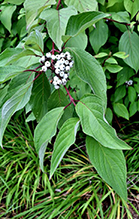 |
Dogwood |
MinnesotaSeasons.com Photos
 |
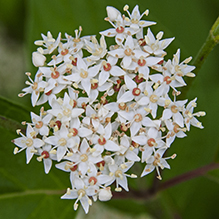 |
|
Plant |
||
|
||
|
||
|
Inflorescence |
|
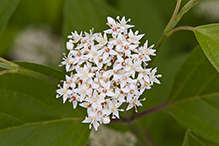 |
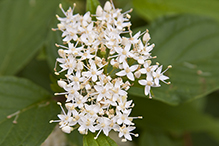 |
|
Inflorescence |
Inflorescence |
|
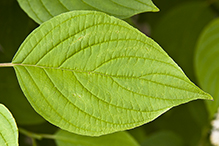 |
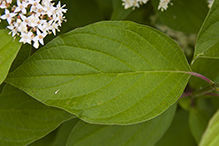 |
|
Leaf upper side |
Leaf upper side |
|
 |
 |
|
Leaf upper side |
||
|
||
|
||
Leaf upper side |
|
|
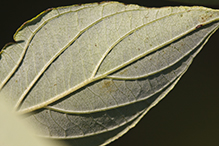 |
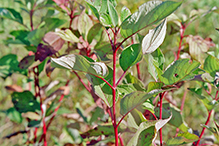 |
|
Leaf underside |
Stem in late summer |
|
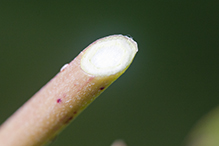 |
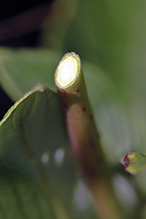 |
|
Pith |
||
|
||
|
||
|
Pith |

Slideshows
Cornus stolonifera
Blake C. Willson
Red Osier Dogwood
DianesDigitals
Cornus sericea (Red-osier Dogwood)
Allen Chartier

Visitor Videos
Share your video of this plant.
This button not working for you?
Simply email us at info@MinnesotaSeasons.com.
Attach a video, a YouTube link, or a cloud storage link.
Other Videos
red osier dogwood
NorthstarBushcraft
Wild EDIBLES Of The Month - Part Five Of August
MiWilderness
Nature's Intuitive Beauty

Visitor Sightings
Report a sighting of this plant.
This button not working for you?
Simply email us at info@MinnesotaSeasons.com.
Be sure to include a location.
MinnesotaSeasons.com Sightings
Bertram Chain of Lakes Regional Park
Carpenter St. Croix Valley Nature Center
Charles A. Lindbergh State Park
Clifton E. French Regional Park
Felton Prairie SNA, Bicentennial Unit
Felton Prairie SNA, Shrike Unit
Margherita Preserve-Audubon Prairie
Minnesota Valley NWR, Black Dog Unit
Minnesota Valley NWR, Chaska Unit
Minnesota Valley NWR, Long Meadow Lake Unit
Minnesota Valley NWR, Wilkie Unit
Minnesota Valley State Recreation Area, Lawrence Unit
Mound Spring Prairie SNA, North Unit
Northern Tallgrass Prairie NWR, Hoffman Unit
Northern Tallgrass Prairie NWR, Pavia Unit
Northern Tallgrass Prairie NWR, Spieker Unit
Pembina Trail Preserve SNA, Crookston Prairie Unit
Pembina Trail Preserve SNA, Pembina Trail Unit
Prairie Creek WMA, Koester Prairie Unit
Richard M. & Mathilde Rice Elliott SNA
Robert Ney Memorial Park Reserve
Stanley Eddy Memorial Park Reserve
Two Rivers Aspen Prairie Parkland SNA

